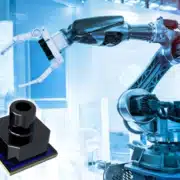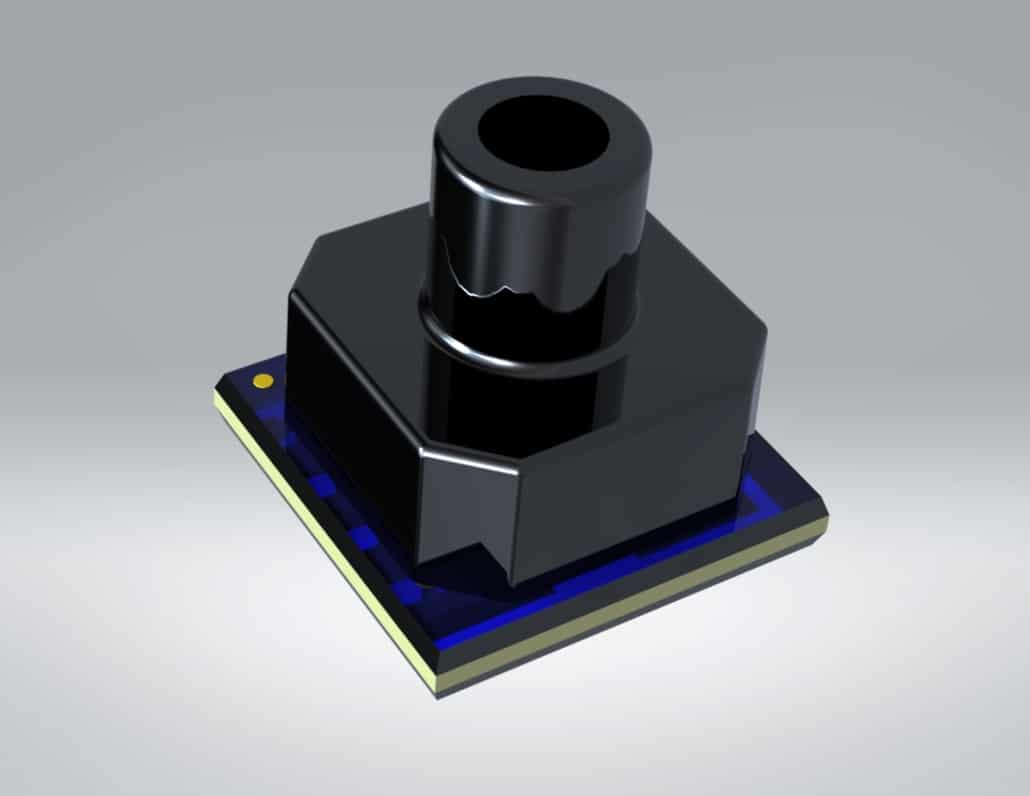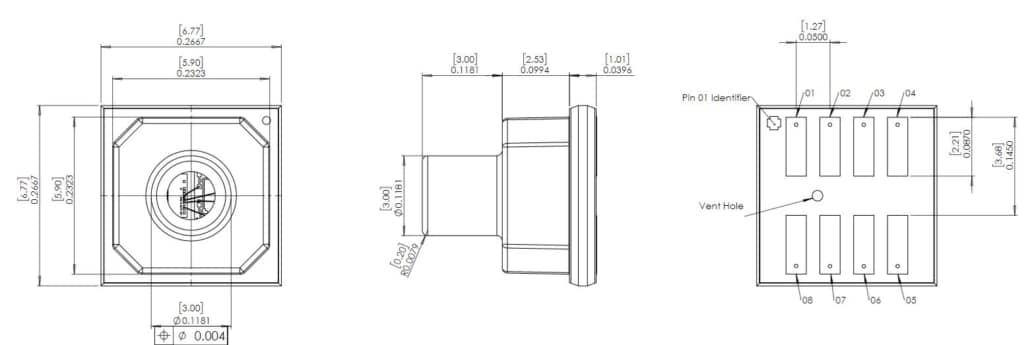How Can Pressure Sensors Enhance Pneumatic Pressure Control in Robotics?
As part of increased automation and Industry 4.0 developments, robots had to become ‘smarter.’1 Regarding automation, smarter robots are those with more advanced sensors that have the ability to be integrated with data analysis and feedback systems.
One of the most common robot types in the industry are robotic arms. They have many uses, from lifting and moving objects to highly precise manufacturing and welding processes.
As an articulated robot, the robotic arm can be designed with a range of motion to suit its designated task, allowing it to carry out any required movements.
Robotic arms provide significant efficiency savings due to their ability to move much faster than their human equivalents. They also maintain high accuracy on numerous repetitive tasks that are involved in manufacturing processes. For some tasks, it is feasible to simply install and program a robot arm to conduct the desired function.
However, for alternative tasks where the robotic arm is used in conjunction with machine vision or more advanced automation, the robot is required to be able to react to and understand changes in the surrounding environment.
One way to help a robot understand the world around them, and allow them to react to tasks in a way that does not simply require pre-programmed and hard-coded parameters, is the utilization of pressure sensors.
Developments in transducer-based sensors for robots have enabled the creation of highly sophisticated articulated robot hands which are able to hold delicate objects.2 The sensor information is communicated to actuators to avoid the use of excessive force.
Pressure Transducer
Achieving increasingly complex motion and degrees of automation demands even more sensors to be utilized. A highly articulated robot hand or arm necessitates a full suite of sensors, with considerations such as the sensor size becoming critical for the application.
The precision and accuracy of the sensors also become progressively important when complex sensor networks provide feedback systems for the robot.
If any sensor within the network begins behaving poorly, the resulting robotic motion will be incorrect and could cause problematic motions for the articulation of the robot or accidental breakages.
In addition to the greater degrees of automation and the utilization of data in manufacturing processes, another aspect of Industry 4.0 development is a bigger emphasis on sustainability.
Mobile robot arms must keep power consumption to a minimum to extend the lifetime of operation between charges. The avoidance of large power draw on sensors also helps minimize the robot operation costs and decrease excess energy consumption.
Pressure Monitoring
One of the most generic tasks for a robotic arm is to hold and pick up objects, some of which may be breakable. A pneumatic actuator converts energy, usually from compressed air, into motion, and such actuators make up the basis of many mobile robots.
Exertion of the appropriate amount of force on an object involves careful control of the volume of compressed air supplied to the actuator. This is generally achieved by measuring the vacuum pressure within the evacuated region, and pressure sensors are the perfect system for this.
In addition to the initial force applied to pick up the object with the actuator, pressure sensors may be utilized to continually monitor the vacuum pressure during holding to guarantee that a constant level of force is maintained.
Pressure sensors in pneumatic actuators are required to have a rapid response time to sudden changes in pressure, especially for robots where the physical motions must be fast. Sensors also must be highly sensitive and have the ability to measure in the vacuum pressure range.
Merit Sensor Systems
The advantages of pressure sensors in robotic arms are evident when creating dynamically responding robots that are capable of a wider range of more sophisticated tasks. The challenge is finding the correct pressure sensor for the task.
Merit Sensor Systems is an expert when it comes to the development of MEMS piezoresistive pressure sensors and provides a variety of different compact, low-power draw sensors.
Merit Sensors has the CMS Series, which is a fully compensated pressure-sensor package for smart robotics.
Based on a piezoresistive pressure sensor with an ASIC to calibrate and compensate for thermal and non-linearity, the CMS Series are highly compact sensors created to provide highly stable and long-term pressure readings.
CMS Series
With a footprint of only 6.8 mm x 6.8 mm, the CMS Series makes integrating numerous sensors into pneumatic robot systems easy.
The digital I2C and SPI output options allow the CMS sensors to be easily integrated into smart feedback systems and make responsive robotics. Where multiple sensors are required for an application, Merit Sensor is also able to create other I2C addresses upon request.
The incorporation of the proprietary Sentium® technology makes the performance of the CMS Series unique. This technology helps these sensors accomplish their wide compensated temperature range (0 to 50 °C or -15 to 85 °C) with best-in-class stability.
The CMS Series are extremely diverse sensors with an extensive operating pressure range of 2 to 150 PSI, with burst pressures from 2 to 100 times the maximum operating pressure.
For pneumatic robotics, this range, combined with the high accuracy and stability, means it is possible to create robots capable of the most delicate lifting tasks as well as more heavy-duty operations.
Absolute and gauge options are also offered if required, in addition to autozero and output averaging functions, making the CMS Series even simpler to use and integrate into any system.
The electrical connections are SMD solder pads with a 1.27 mm standard spacing, and the CMS products are compatible with a 2.7 to 5.5 V supply voltage range. The devices may be run in a low-power mode to maximize energy efficiency.
The CMS products are all RoHS compliant, with the reliability and accuracy of these sensors underpinned by a piezoresistive Wheatstone bridge that is designed to anodically bond the glass to a chemically etched silicon diaphragm.
Contact Merit Sensor Systems today to discover how the CMS Series could further the performance and accuracy of your pneumatic robots and the overall efficiency of your systems.
References
- Sartal, A., Bellas, R., Mejías, A. M., & García-Collado, A. (2020). The sustainable manufacturing concept, evolution and opportunities within Industry 4.0: A literature review. Advances in Mechanical Engineering, 12(5). https://doi.org/10.1177/1687814020925232
- Girão, P. S., Ramos, P. M. P., Postolache, O., & Miguel Dias Pereira, J. (2013). Tactile sensors for robotic applications. Measurement: Journal of the International Measurement Confederation, 46(3), pp. 1257–1271. https://doi.org/10.1016/j.measurement.2012.11.015
For more information, visit this article on AZOSensors.com







